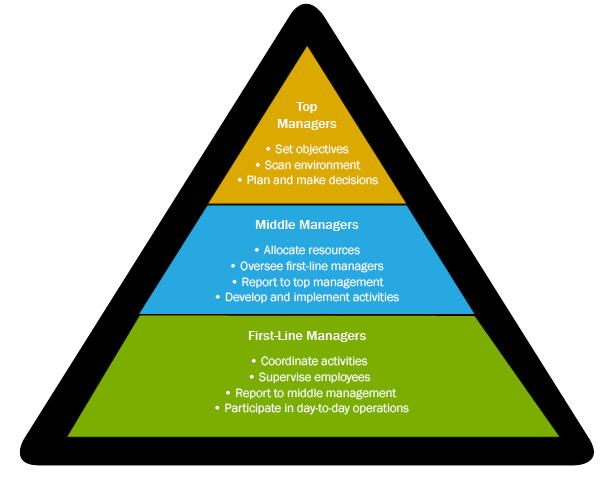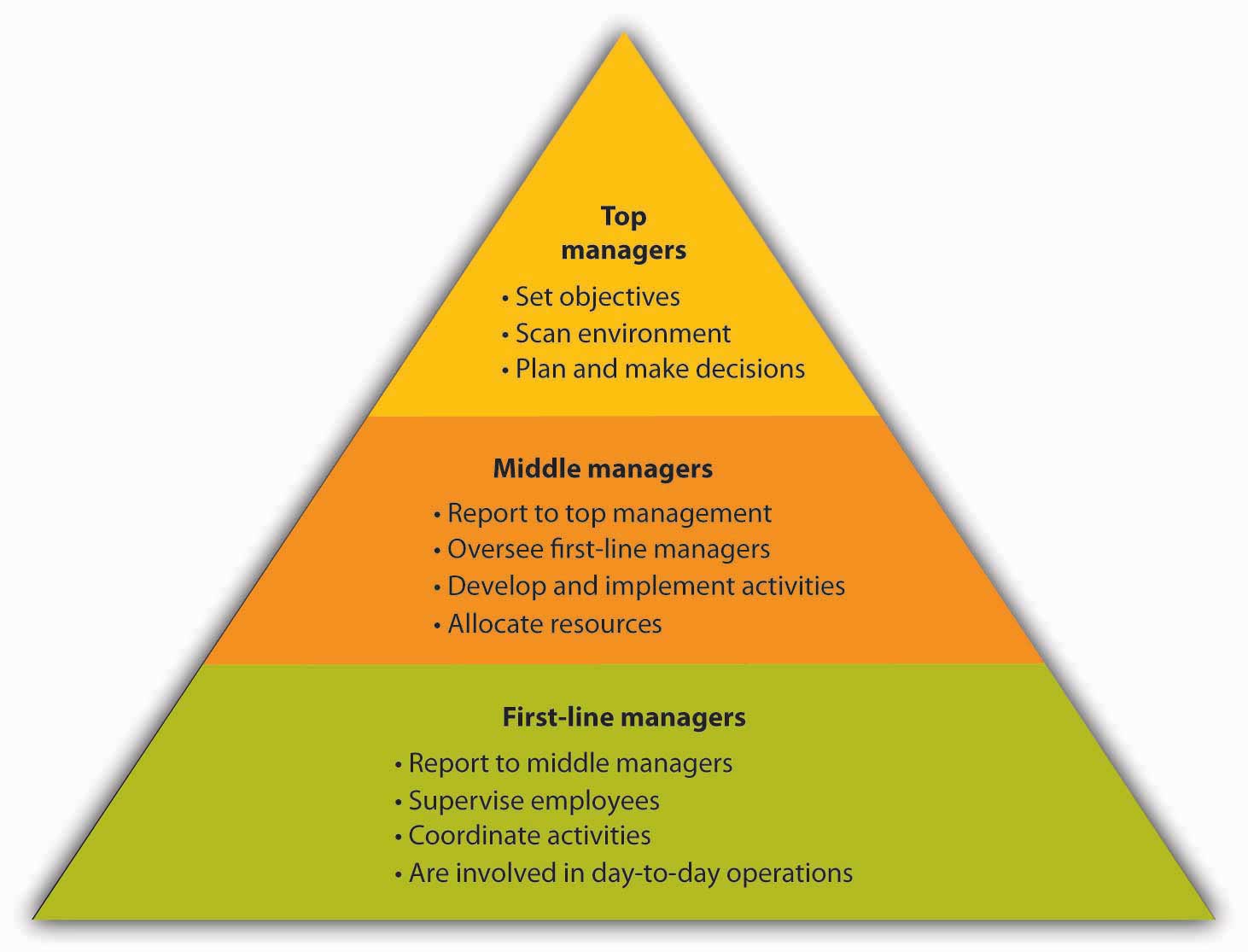Typical Functions of First Line Managers Include:
First Line of Defense Management. First level managers are often called supervisors.

Levels And Functions Of Management Planning Controlling With Examples
Officially represent their organization to the external environment.

. The model breaks down a managers job into five functions. They act as a liason between employees and upper management. Top-Level Management is also referred to as the administrative level.
First-line managers play a vital role they are the managerial glue of a business responsible for many critical day-to-day operations as well as making sure organizational objectives goals and plans are met and implemented. Those functions might differ for managers in different levels. Introduction of the Five Functions of Management.
Operational management is responsible for maintaining effective internal controls and for executing risk and control procedures on a day-to-day basis. Examples of first line managers are the foreman or production supervisor in a manufacturing plant the technical supervisor in a research department and the clerical supervisor in a large office. Classic responsibilities of managers include calculating staff roles and how these correlate with the organizations objectives.
First line managers direct non-management employees. D HR managers carry out three primary functions--line coordinative and staff. Theyre often an organizations largest population of leaders and in many cases theyre entry-level managers who are on the line and in closest contact with.
Advising line managers and representing employee interests to senior management are staff functions. They assign tasks manage work flow monitor the quality of work deal with employee problems and keep the middle managers and executive managers informed of problems and successes at ground level in the company. Corporate leaders are making more demands on managers to maintain high levels of employee engagement and HR professionals are drawing on a variety of strategies to get managers involved in nurturing an engaged workforce.
Training and development also play a strong part with 56 of HR managers believing that training and development is a key business growth enabler. The top-level management is made up of the Board of Directors the Chief Executive Officer CEO the Chief. Low-level Management Supervisory The levels of Management and Their Functions are Discussed Below.
At the beginning of the last century 1916 the French engineer Henri Fayol created the first principles of management theory. The manager delegates tasks to people and teams to implement the plan. To supervise handle control and manage the performance improvement plan of the workers.
They do to supervise other managers. Others may describe frontline managers as those who are responsible for the. Ensuring that line managers implement HR policies is a coordinative function.
The first level of management is called top-level management. First-line managers operate their departments. AGENDA SETTING things wanna accomplish - managers identify clear action priorities.
The first line of defense lies with the business and process owners. Based on his experience as a successful director or a mining company he developed several. Make decisions about activities such as acquiring other companies and entering or abandoning various markets.
They work to ensure programs are implemented effectively in a department to help the organization meet its goals. Strategy development and corporate reporting. 2 30 points Planning and controlling are among the primary functions of managers.
Responsibilities of a line manager. If promoted to this important role you will assign tasks review the work of your subordinates monitor their work habits evaluate their performance and provide them feedback. Directing members of the HR staff is a line function.
First-line managers are focused almost exclusively on the internal issues of the organization and are the first to see problems with the operation of the business such as untrained labor poor quality materials machinery breakdowns or new procedures that slow. The manager makes a plan to achieve the objectives of the organization. Line managers also known as direct managers oversee other employees and operations of a business.
Planning decision making objective setting. Are primarily responsible for implementing the policies and plans developed by top managers. They may be called assistant managers shift managers foremen section chiefs or office managers.
They coordinate services and are keen on planning. Henri Fayol is classified as the founding father of for example the line and staff organization. Line managers plays a vital role in improving employee engagement across functions teams.
NETWORKING built and maintain positive relationship with other - managers build and maintain positive relationships with other people ideally those whose help might be useful someday. To plan the activities and task to achieve the goals set by the top-level management. This consists of identifying and assessing controls and mitigating risks.
Individuals also need supervision so that they. Typical functions of first line managers include. A line manager is not the same as a project manager.
To guide the workers and keep them informed of the work producers and policy proposals. First-line or supervisory management Managers who directly supervise nonmanagement employees employees who do the work. For example top-level or first-line managers might think different when planning or controlling Select a company as you wish and imagine yourself as a manager in all three levels one by one.
Top management is made up of senior-level executives of an organization or. The manager organizes people and resources to best achieve the plan. To assist and solve the problems of the workers.

Managers Introduction To Business

Reading Organizing Introduction To Business

Company Management Hierarchy Business Management Organizational Chart Leadership Management
Comments
Post a Comment